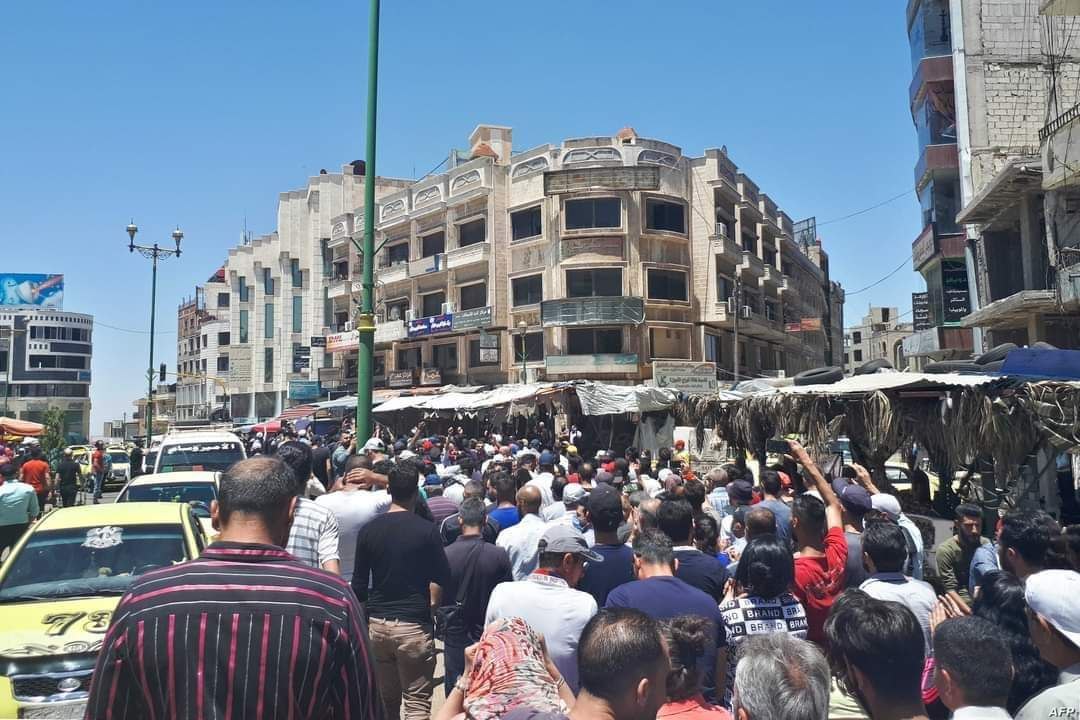
Amid the ongoing deterioration of Syria’s economic situation, marked by the Syrian pound crashing to a staggering 15,800 to the dollar, the nation’s woes continue to deepen. Recent days have witnessed a surge in unrest and public outcry due to the protracted economic struggles and continued ineptitude and callous policies of the Assad regime.
In a surprising turn of events, following a presidential decree by Bashar al-Assad on Wednesday, government employees in Assad-held regions were taken aback as their salaries were doubled from the equivalent of $10 to $20 per month. However, the regime’s subsequent announcement of a 300% increase in the prices of oil-based commodities, including gasoline, liquid gas, and diesel, left many in shock and brought public and private transportation to a standstill. This perplexing news came mere hours after the wage increase was decreed.
The reverberations of this fuel price hike rippled through the broader market, resulting in a significant 15%-25% surge in the prices of all goods within regime-controlled areas. The resulting confusion and market instability prompted the closure of numerous shops and businesses. In protest, drivers of buses, taxis, and minibusses across regime-controlled regions, including strongholds such as Damascus and Latakia, launched a strike. A media outlet aligned with the regime, Sama, reported, “The owners of vehicles are on strike all over Syria, in order to increase the fares following the increase of the diesel price.”
As the transportation strike entered its second day, protests in the predominantly Druze Suwayda governorate escalated to a level reminiscent of the initial outbreak of the revolution in 2011. Roads were obstructed by burning tires, and citizens vociferously demanded the removal of Assad in front of police stations, government buildings, and the city center. Among the chants resonating from the protesters were, “Syria is for us, and not the Assad family!” and “Long live Syria! Down with Bashar al-Assad!” Graffiti on a school wall conveyed the sentiment, “Down with Captagon Assad.”
Amidst transportation strikes and protests in Daraa’s Nawa, Latakia, Damascus suburbs, Tortuous, and Suwayda, journalist Kinan Waqaf released a video on his Facebook today calling on all Syrians in Assad-controlled areas to participate in a general strike. He encouraged all workers to stay in their homes and shutter their shops, saying, “Why go to work when your salaries aren’t even enough to pay for the cost of transportation?” Waqaf even urged military personnel and members of the regime’s intelligence and security services to participate, saying about the regime that, “the policy of starvation is a systematic policy.” The post bore the hashtag “August 10 Movement,” a grassroots group promoting “peaceful resistance and protests” within Assad-controlled areas to pressure the regime to improve conditions of make concessions to the people.
The unfolding events demonstrate the rapidly escalating state of popular discontent as areas under regime control are experiencing the worst living conditions since 2011. Services are non-existent, electricity blackouts have reached 23 hours a day, with other basic services deteriorating, due to the regime’s ineptitude. As the regime implodes from within, buckling under the weight of systemic mismanagement and corruption, public dissent has led even many of Assad’s most loyal supporters to call for his downfall. In such a volatile climate a renewed uprising, similar to that which occurred in 2011, seems more and more likely with each passing day.








